
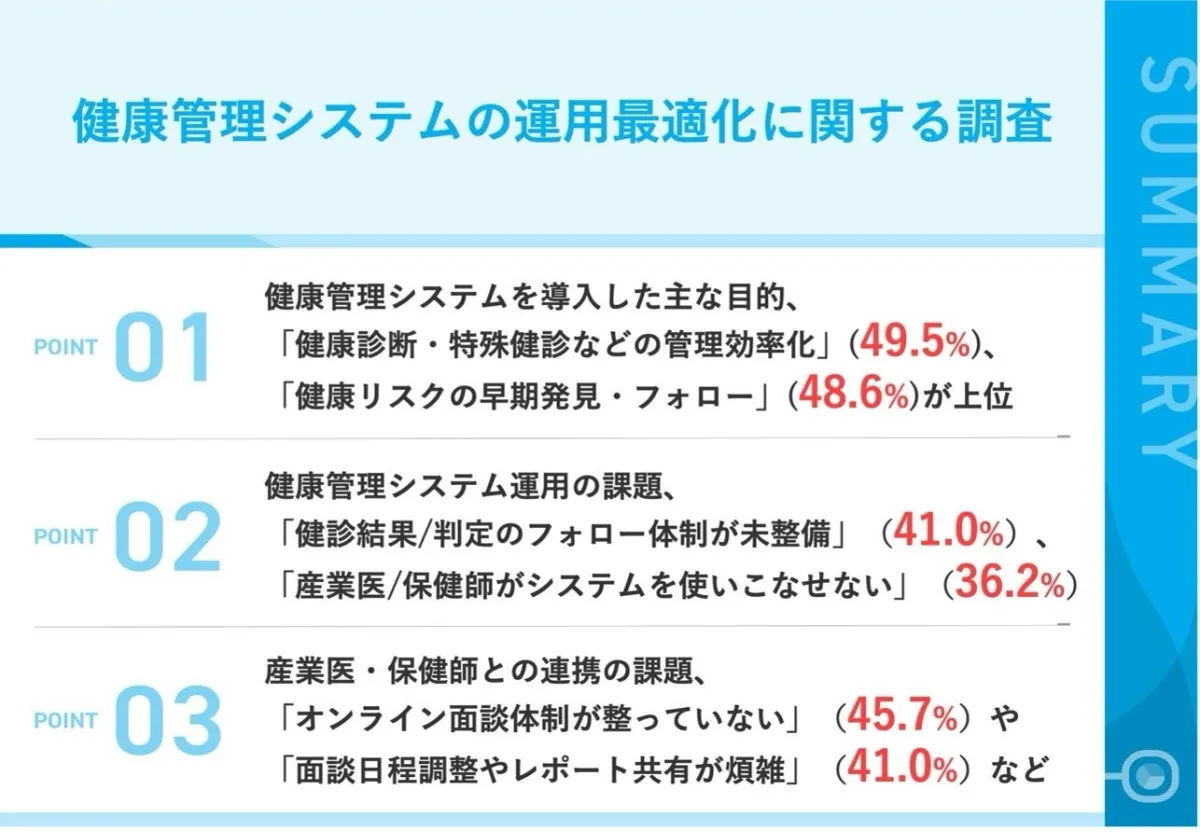
Optimizing Health Management Systems in Companies: Current Trends and Challenges
Optimizing Health Management Systems in Companies: Current Trends and Challenges
With the increasing importance of health management in organizations, many companies are actively implementing health management systems. However, challenges have emerged, revealing that while tools are being adopted, they are not utilized effectively. Recently, Mediplat Co., Ltd. (Chuo-ku, Tokyo; CEO: Junya Tsuruz) conducted a survey titled "Survey on the Optimization of Health Management System Operations," targeting HR personnel and industrial health staff from enterprises with 300 or more employees that have already adopted health management systems.
Summary of Survey Results
The survey results present a mixed bag, highlighting both progress and areas for improvement within the realm of health management systems in organizations. 105 individuals participated, providing insights that reflect the operational realities of health management initiatives.
Key Findings
1. Objectives for Implementation: The leading motivations for adopting health management systems include "Improvement in health check management efficiency" (49.5%) and "Early detection of employee health risks" (48.6%). These results signify that there is an expectation for integrated management of health check data and early preventive measures in many organizations.
2. Achievement of Goals: An encouraging 80.0% of companies reported they have "fully or somewhat achieved their goals" following the implementation of health management systems. Particularly, 55.2% noted easier tracking of participation rates and results across different divisions and locations, while another 55.2% appreciated the early identification and follow-up of high-risk employees as significant advantages.
3. Operational Challenges: Conversely, 41.0% of enterprises indicated they could view health check results but do not have an established follow-up system. Furthermore, 45.7% mentioned the absence of a structured system for online consultations, which obstructs effective collaboration with industrial doctors and health nurses, demonstrating a gap in addressing each employee's health issues adequately.
4. Exploration of Alternative Systems: Although 53.3% plan to continue with their current system, 32.4% are considering switching to other systems. Factors influencing this decision include difficulties with user interface and cumbersome sharing processes with industrial doctors and health nurses, indicating that operational burdens are preventing optimal use of their implemented systems.
Detailed Insights
1. Purpose of System Adoption
When investigating the main reasons for adopting health management systems, the response rates showed that 49.5% aimed to enhance efficiency in managing health checks and screenings, while 48.6% wanted to ensure early detection and follow-up of employee health risks. Additionally, 47.6% declared the desire to shift away from paper and Excel-based management to a more streamlined system.
2. Benefits of System Implementation
Regarding the advantages gained from these systems, participants frequently highlighted the ease of tracking participation rates and results, with 55.2% affirming that they could now better monitor these metrics. Moreover, the ability to detect and follow up with high-risk employees resonated with the same percentage, while 34.3% noted improved communication with industrial doctors and health nurses.
3. Current Challenges in Operations
Despite these benefits, a substantial 41.0% of respondents acknowledged that the follow-up infrastructure remains inadequate. Additionally, difficulties with usability of the systems were flagging, as 36.2% reported that health professionals struggled to utilize the system effectively, while 35.2% cited issues with complex operations and poor user interfaces as additional challenges.
Future Directions and Considerations
The finding that nearly 60% of respondents acknowledge the need for follow-ups based on health check results reinforces the idea that collaboration with health professionals is essential for successful health management initiatives. However, the lack of proper online consultation setups and issues surrounding scheduling and report sharing further complicate the ability to coordinate care for employees.
The Path Forward
It's clear that while many organizations are benefiting from the integration of health management systems, there is still work to be done in terms of operational execution and making effective use of these tools. The disconnect between having data available while failing to capitalize on it reveals a significant gap in the functionalities of current systems.
Conclusion
Ultimately, merely introducing a health management system is insufficient for achieving health management goals within an organization. Effective operational design post-implementation, alongside establishing solid collaborative frameworks with medical professionals, emerges as a key component in realizing success in company health management. Mediplat continues to support businesses in achieving this by enhancing follow-up systems and ensuring cohesive information exchange with health professionals to foster a truly health-conscious corporate environment.
Comments from Mediplat
Shuhei Osawa, Marketing Department Manager of Mediplat's Industrial Health Support Division, stated that while the adoption of health management systems has produced noteworthy achievements, several operational challenges persist. He emphasized that enhancing the follow-up framework and improving collaboration with medical professionals are critical areas of focus. He also cautioned that the evaluation of health management efforts will soon shift from mere adoption to how effectively these systems can be integrated into actionable strategies in the workplace.
Survey Overview
- - Title: Survey on the Optimization of Health Management System Operations
- - Methodology: It involved online surveys conducted through IDEATECH’s research platform, "RisaPi®."
- - Survey Period: March 31 - April 1, 2025.
- - Valid Responses: Total of 105 HR personnel and industrial health staff from companies with 300 or more employees.
To view the full report, visit: Download Here
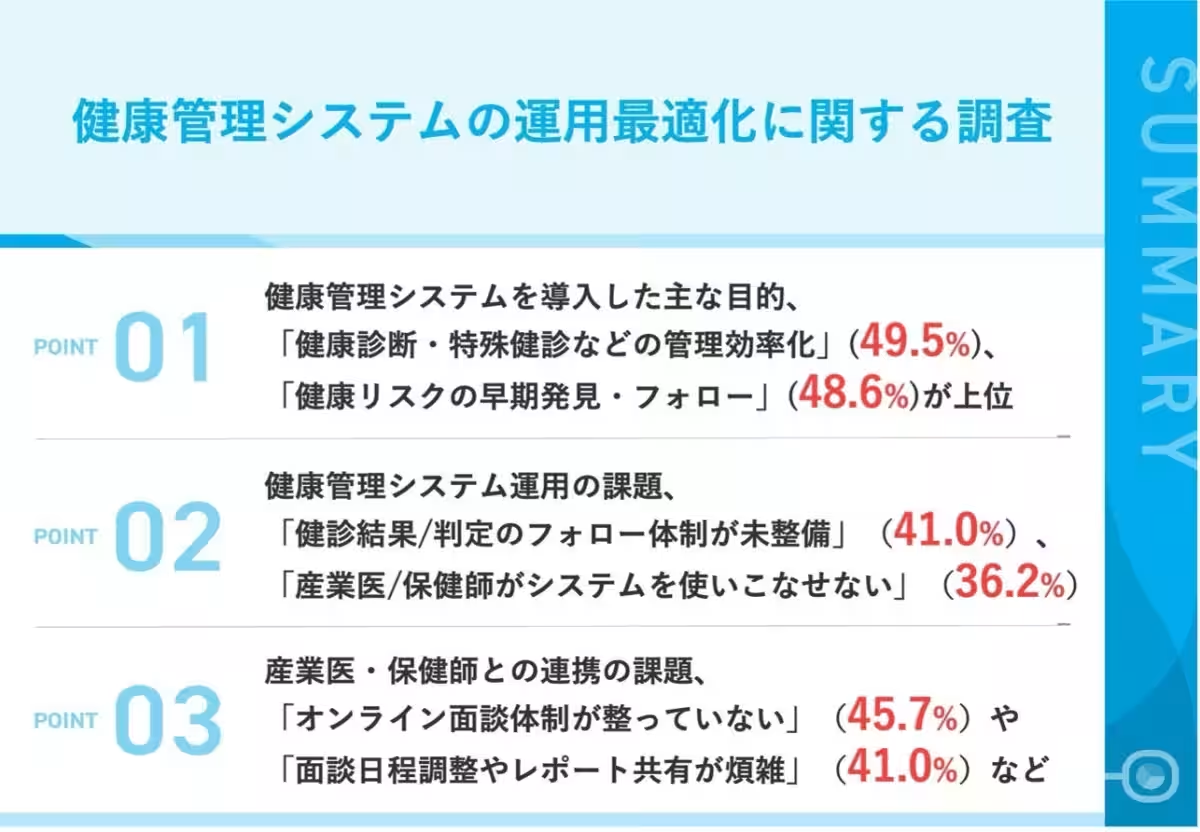

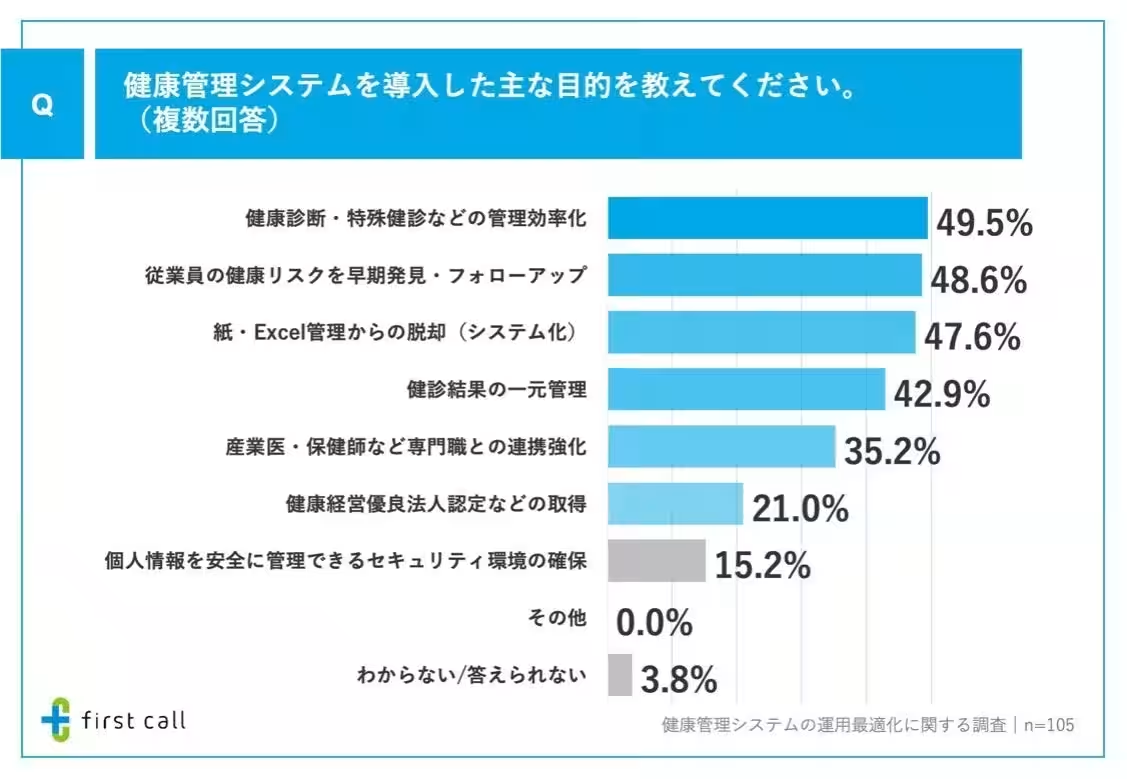
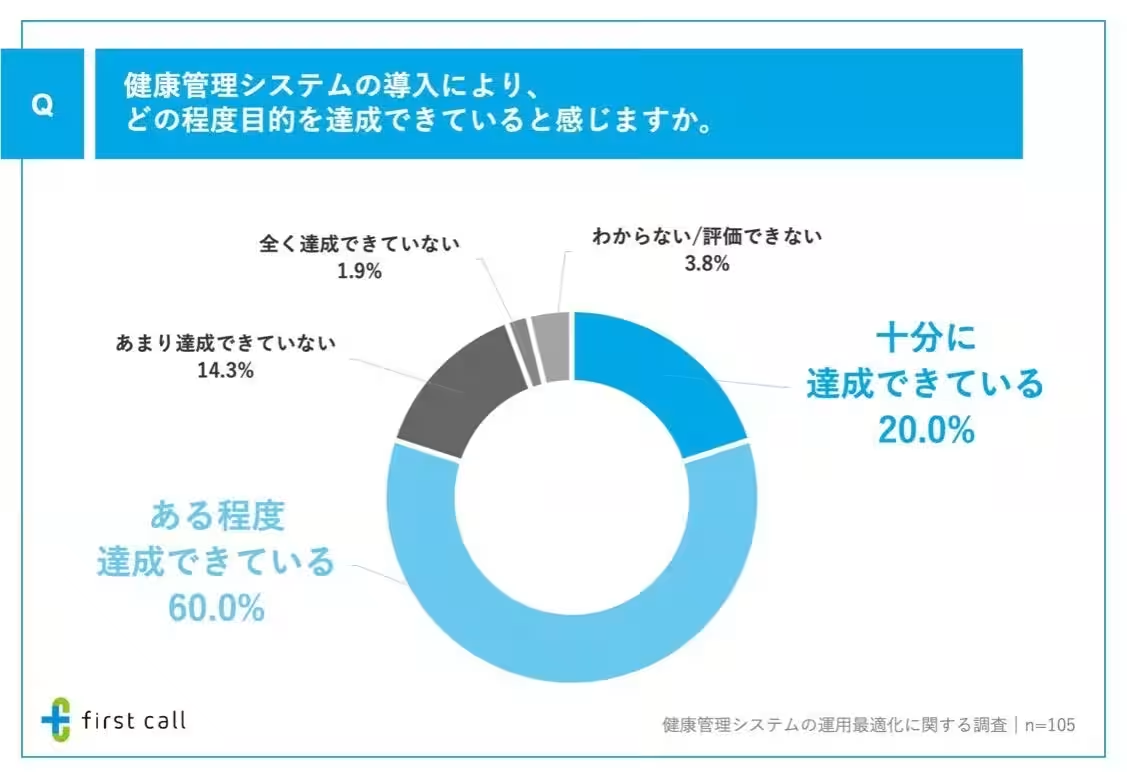
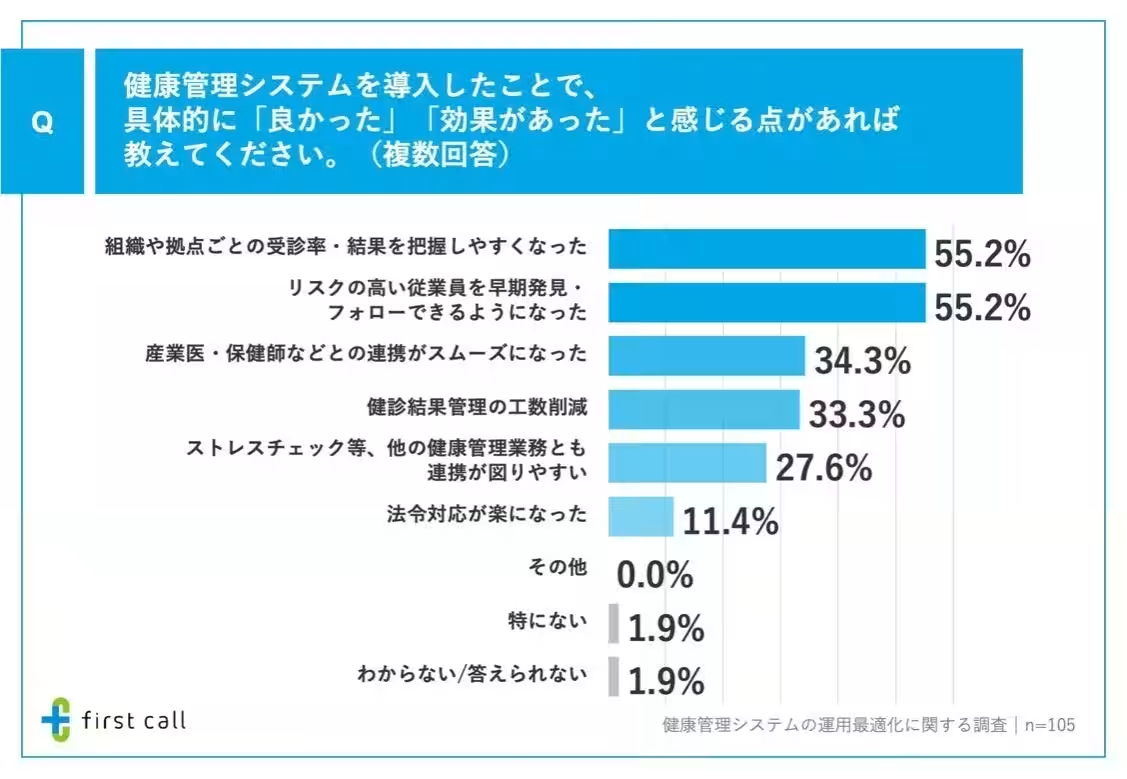
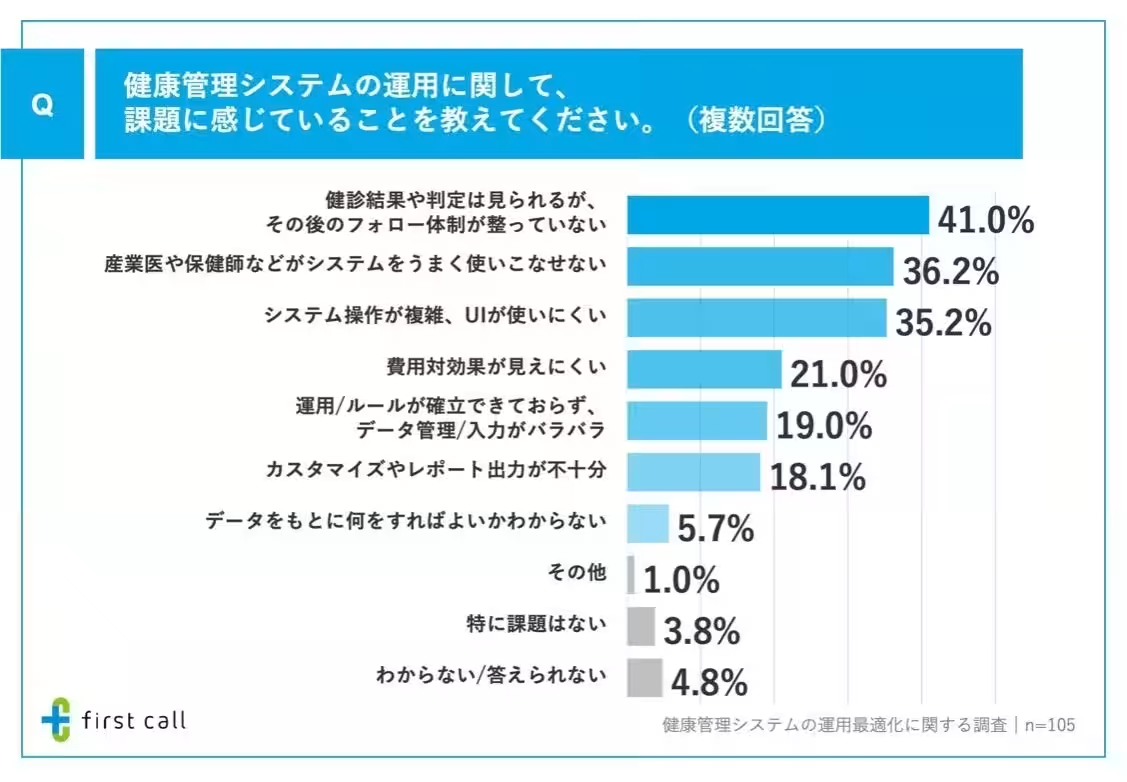
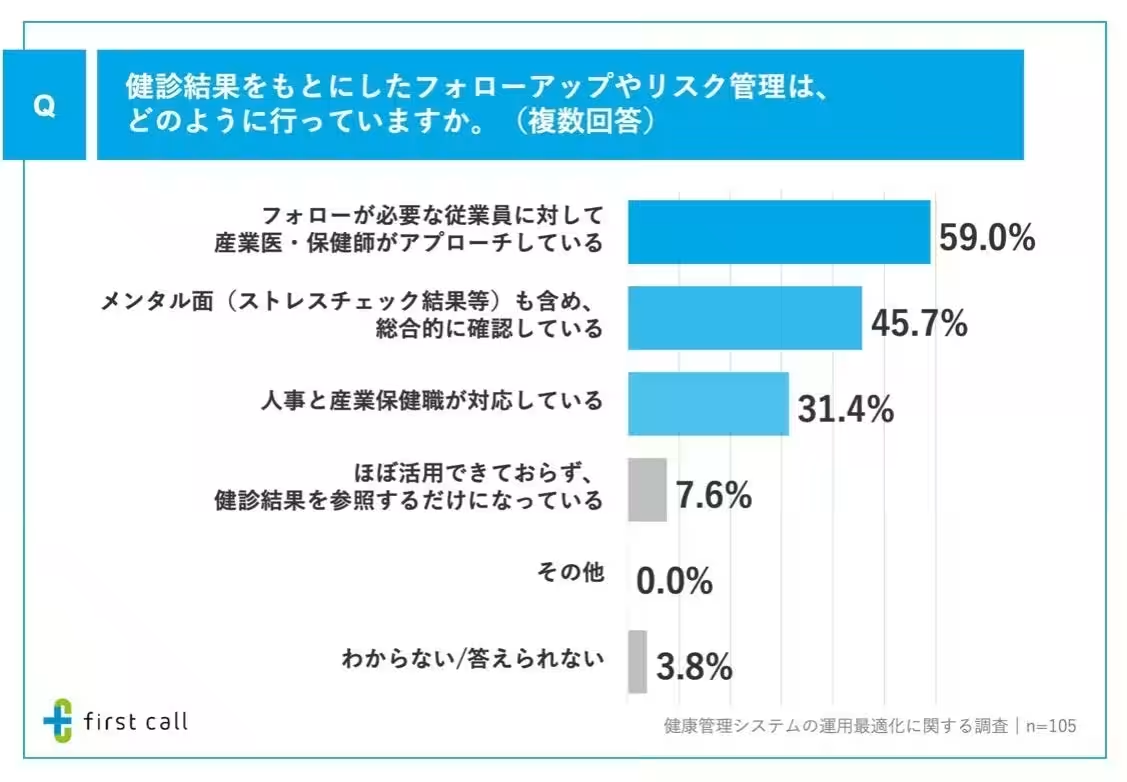
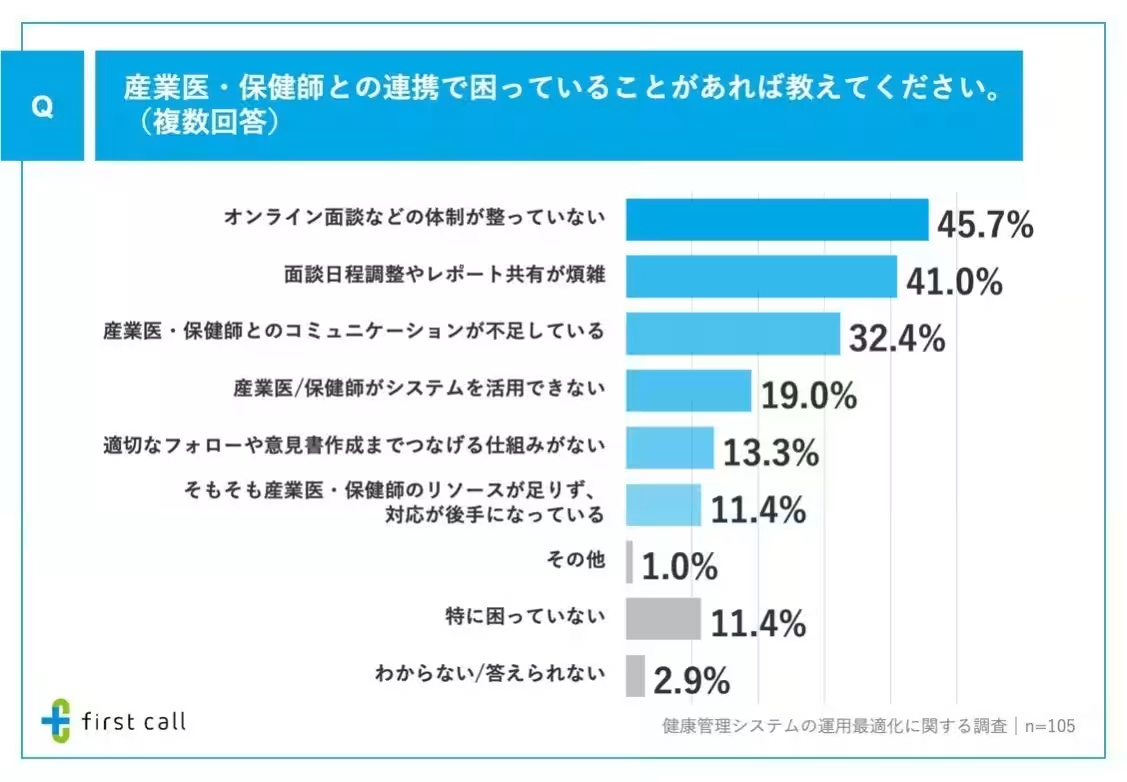
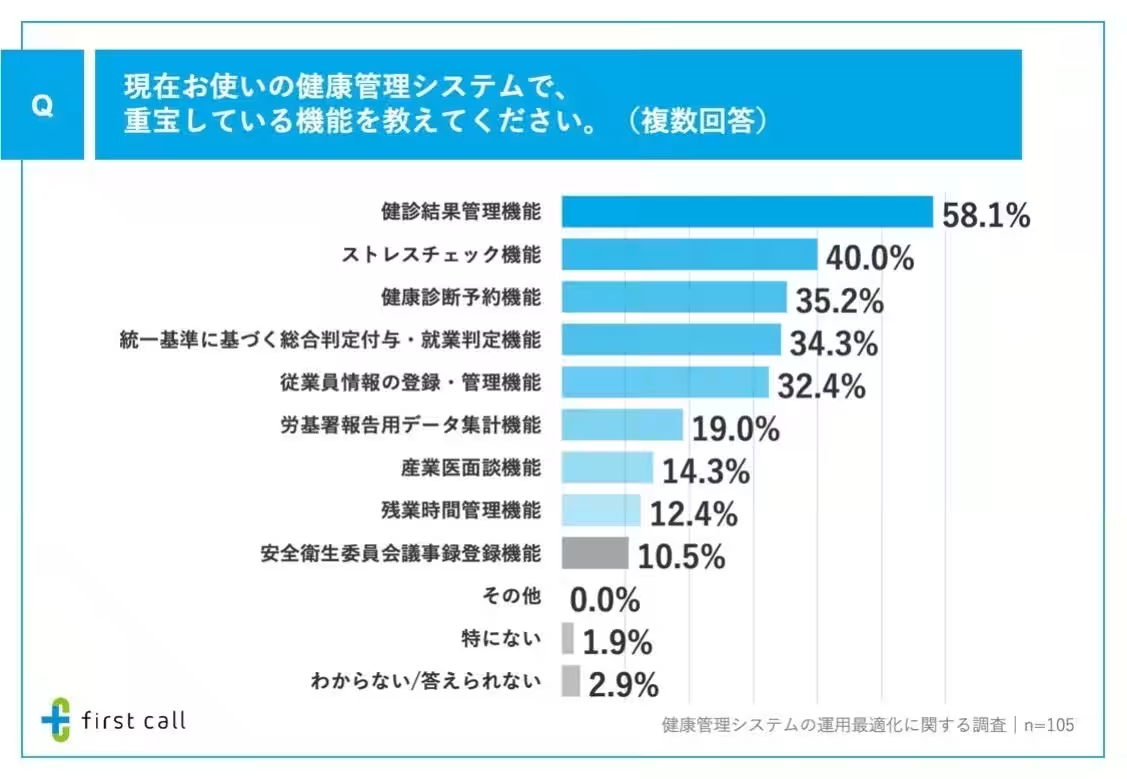
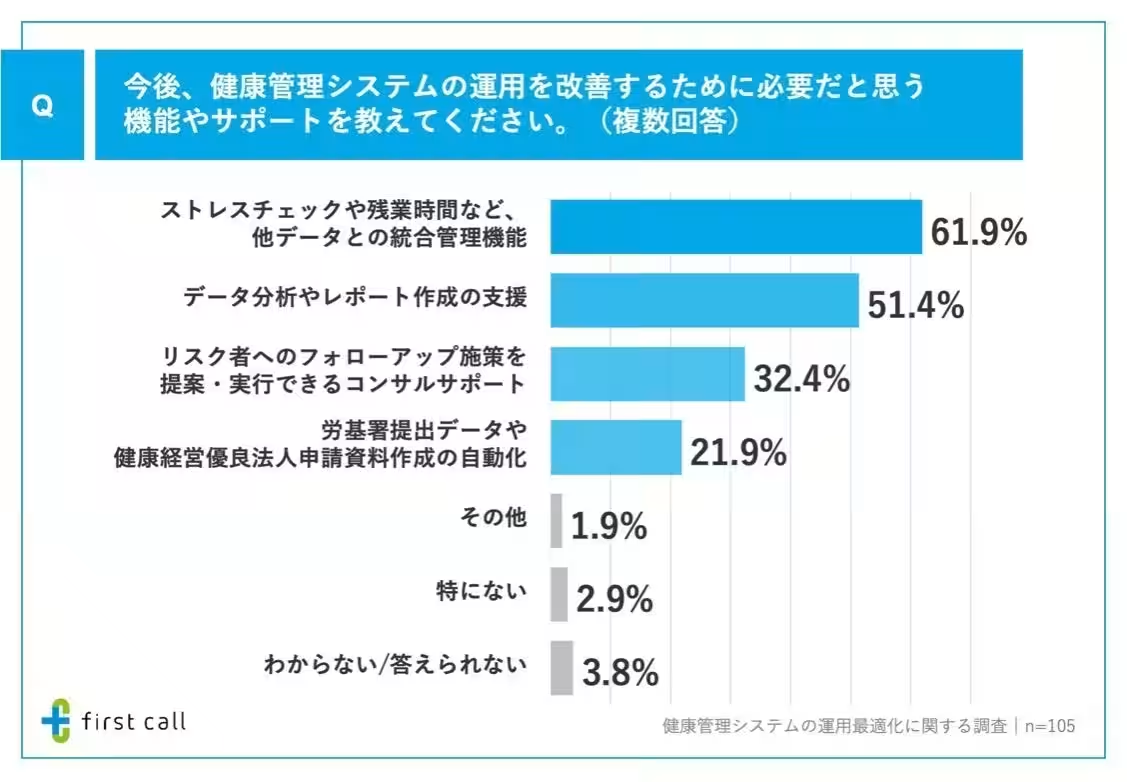
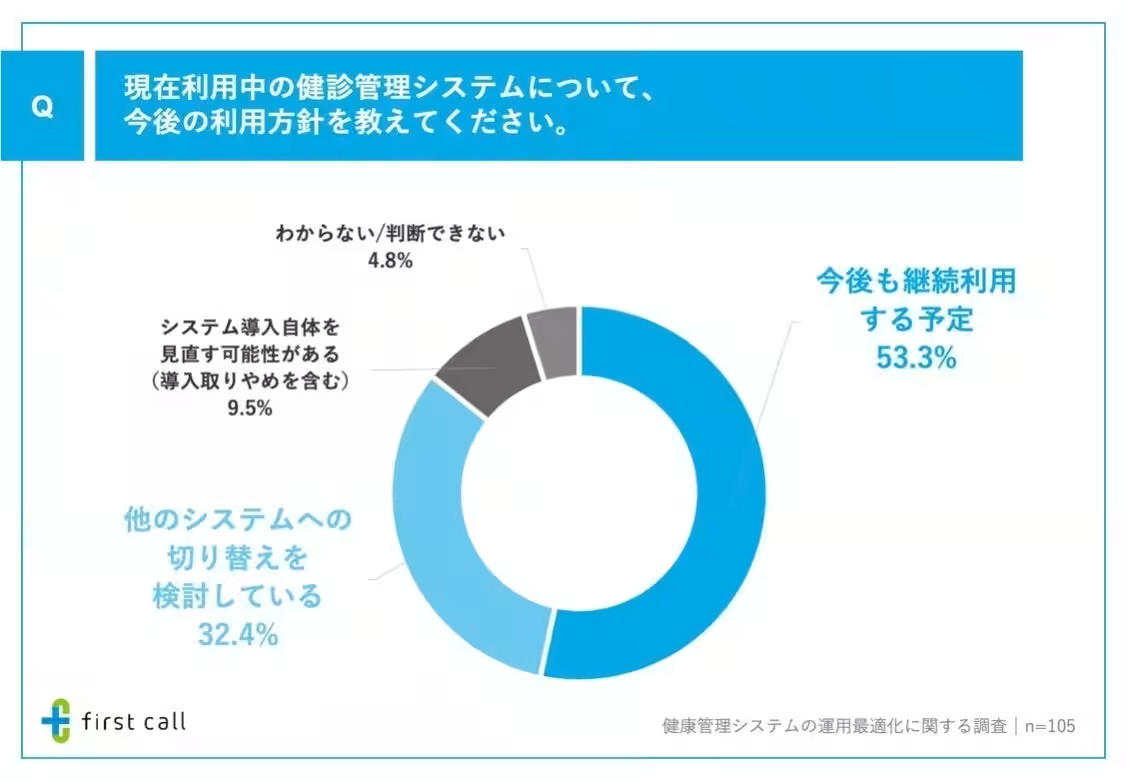
Topics Health)










【About Using Articles】
You can freely use the title and article content by linking to the page where the article is posted.
※ Images cannot be used.
【About Links】
Links are free to use.